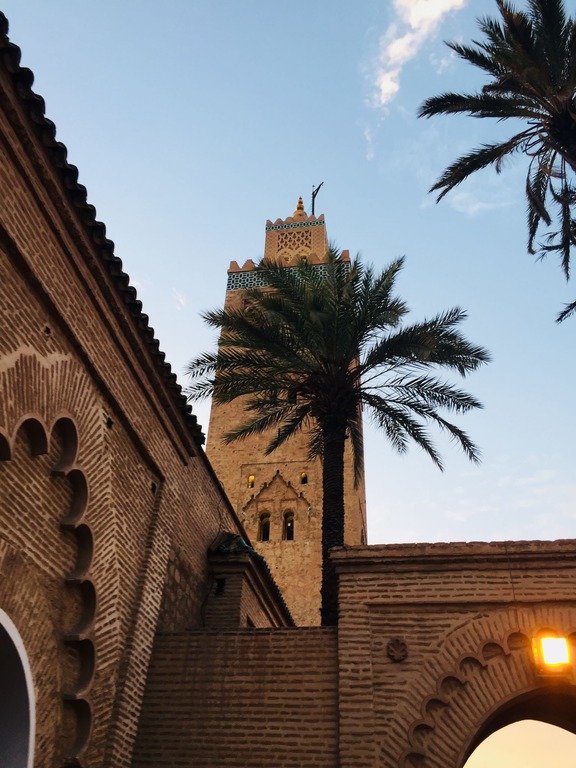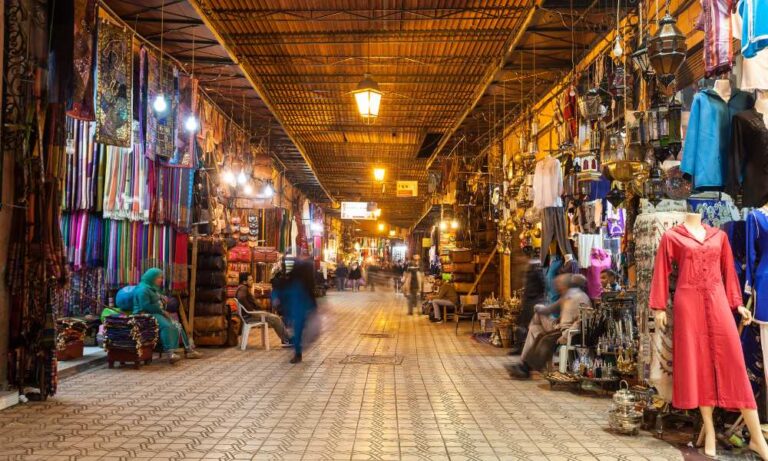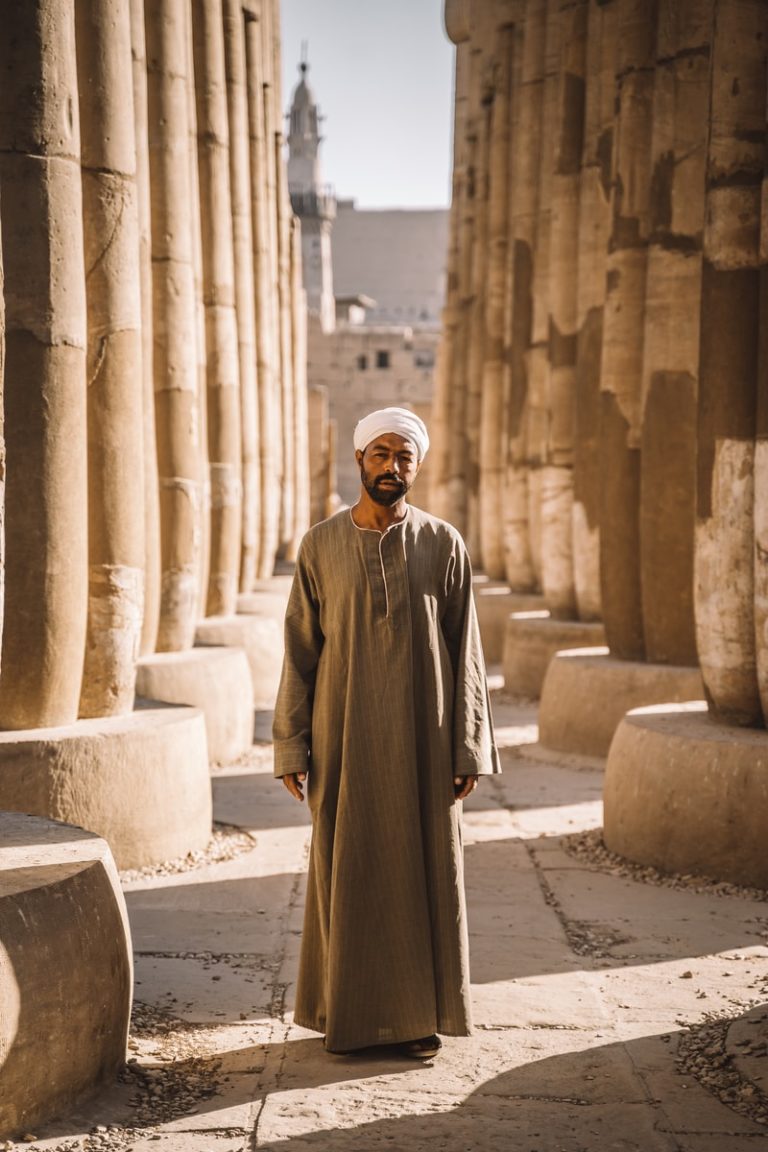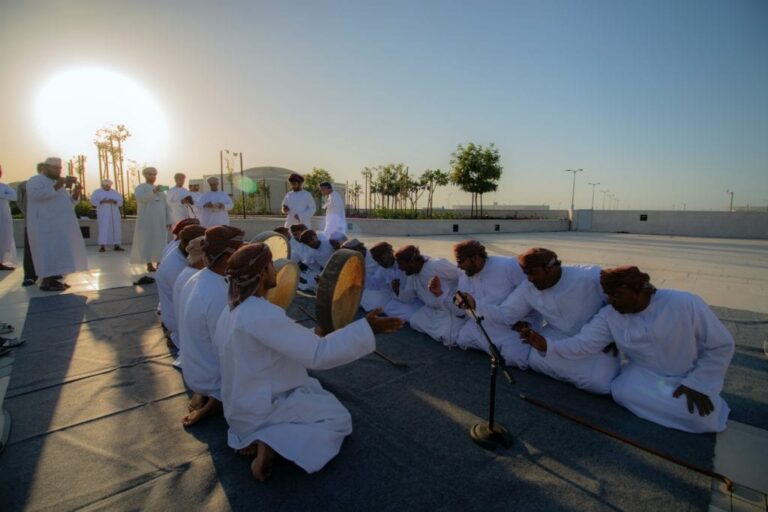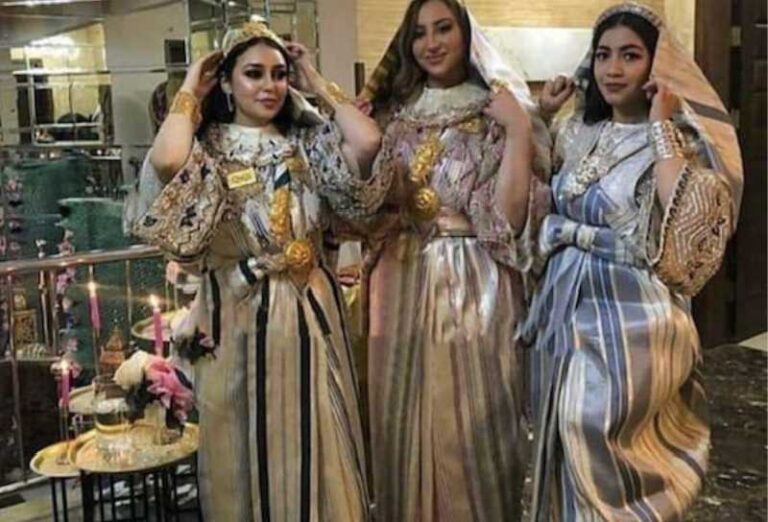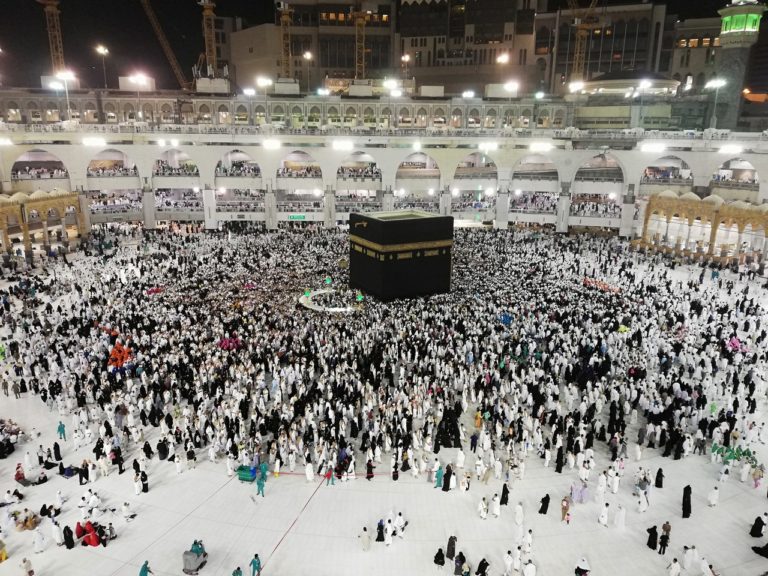Moroccan Traditional Clothing
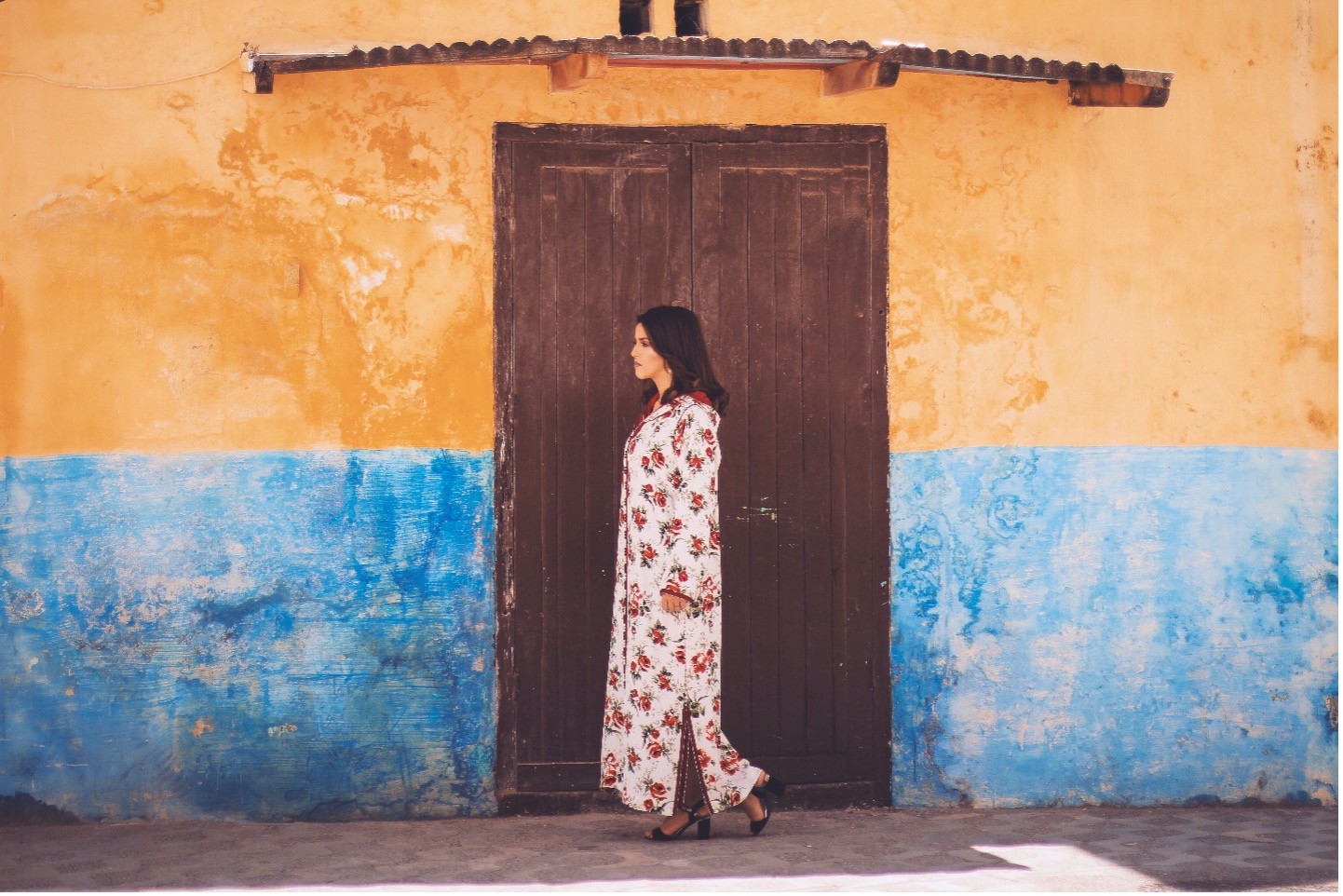
In the enchanting kingdom of Morocco, traditional garments not only serve practical purposes but also proudly embody national, cultural, and religious identities.
Some links below may be be affiliate links. As an Amazon Associate I earn from qualifying purchases.
Morocco offers a mesmerizing selection of traditional clothing that is truly captivating and worthy of a place in anyone’s wardrobe.
Join us as we introduce you to the fascinating world of Moroccan traditional clothing and address some commonly asked questions.
Whether you’re seeking a polished and culturally rich ensemble or aiming to make a stylish statement – Moroccan traditional clothing has something to offer.
Let’s explore the beauty and significance of these garments together!”
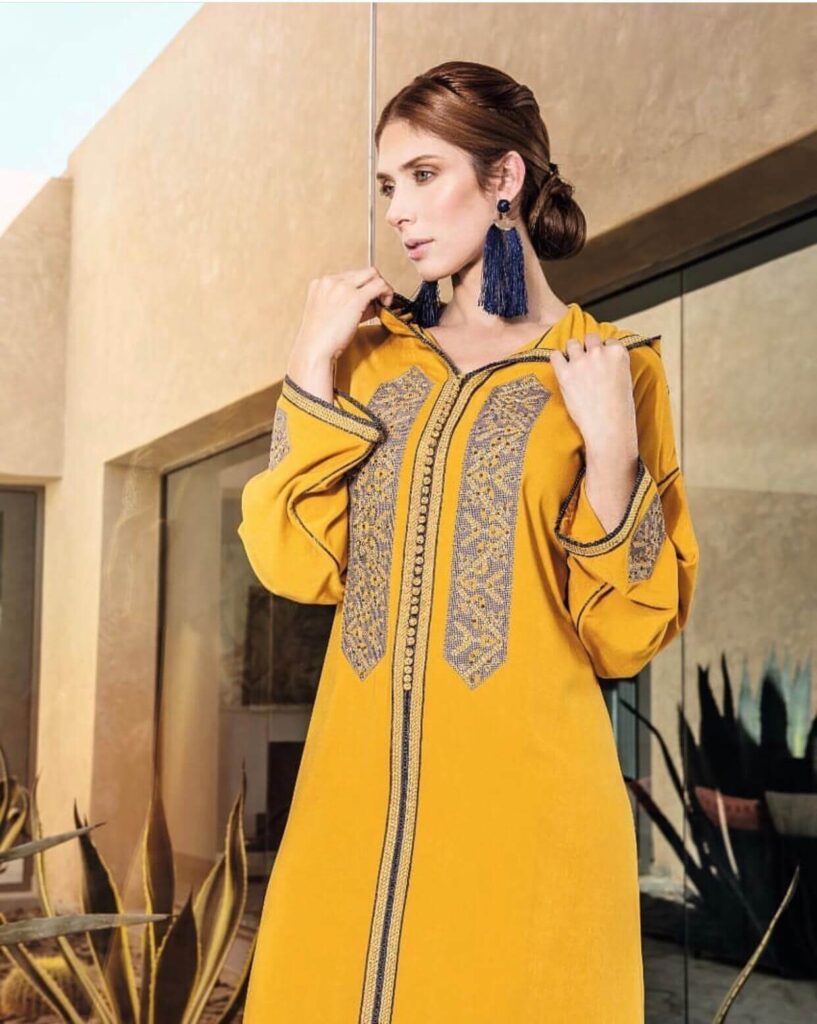
Table of Contents
Djellaba
The word “Djellaba” is derived from the Arabic word “jilbab,” referring to a long loose outer garment worn by both men and women.
While many Arab countries have their versions of this garment, the Moroccan one stands out with its unique features.
Originally, the Djellaba was exclusively worn by men, designed with oversized proportions, long sleeves, and a large hood for protection against harsh weather.
It was crafted from thick striped wool material. However, as Morocco gained independence, women embraced the Djellaba, breaking free from the traditional Haik, signifying liberation.
Over time, the Moroccan Djellaba has evolved into a versatile piece of clothing available in various styles and fabric options, including cotton, wool, silk, and more, suitable for diverse occasions and both genders.
Men commonly wear it for prayer at the mosque, during Ramadan, and on religious holidays like Eid.
Their designs are simple, featuring soft color combinations, while the traditional heavy material Djellaba remains popular for winter wear.
For women, the Djellaba is a day-to-day garment that seamlessly blends elegance, comfort, and practicality.
It offers a wider range of designs and vivid color combinations compared to men’s Djellabas.
The making of a Djellaba is a testament to exquisite craftsmanship. It starts with skilled seamsters or seamstresses taking measurements and noting the wearer’s style and color preferences.
The design of the dress typically includes long triangle or square sleeves, a triangle hood, and small slits on the sides or in the middle.
Skilled embroiderers then add intricate designs inspired by nature, such as butterflies, birds, and flowers, using beading techniques.
The Djellaba is fastened using a line of braid or silk buttons that match the braid trim on the dress’s front and ends.
The level of detail and workmanship determines the formality of the Djellaba.
In addition to the traditional Djellaba, there are fancier versions made from expensive fabrics, featuring removable hoods, known as “K’mis.”
These special Djellabas are worn on more celebratory occasions like pre-engagement parties, Islamic holidays, and family gatherings.
Kaftan or Caftan: A Special Occasion Dress in Moroccan Culture
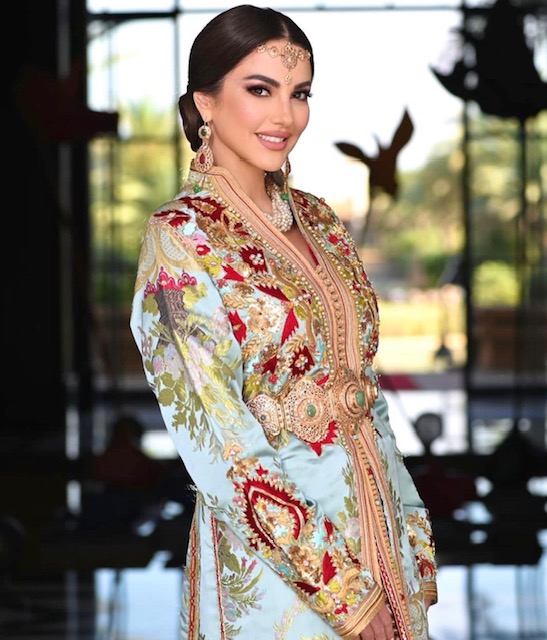
The Caftan first appeared in the Marinid dynasty. Back then, it was solely worn by Moroccan royalty; men and women alike. It was a privilege that the commoners couldn’t afford.
The garment was long and loose-fitted with long sleeves and a matching fabric belt or gold belt called Mdama.
Due to the complexity of its embroidering, beading and delicate fabric, only the most experienced seamstresses could handle it.
Progressively, the Caftan was made accessible to all social classes. This has not taken away from its status as a symbol of elegance and sophistication.
Today, it is one of the trendiest special occasion attires next to the Takchita.
Moroccan women can be seen wearing it to engagement parties, weddings and “Aqiqah” which is the joyful celebration of a child’s birth.
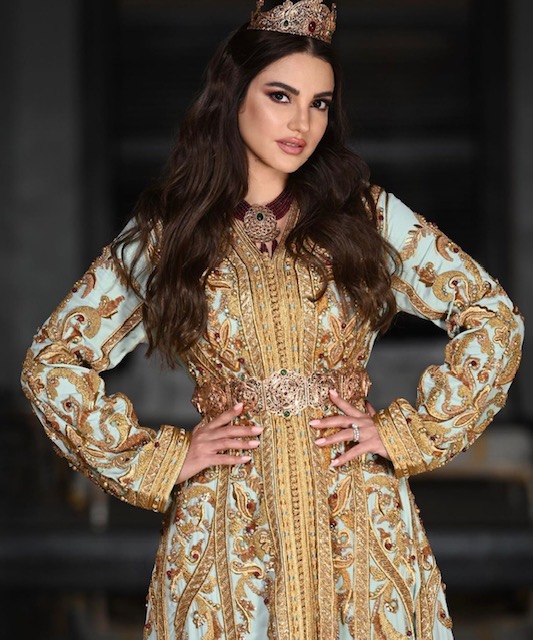
Takchita:
Non-Moroccan and Moroccan Kaftan designers frequently confuse it for Takchita.
For Moroccans, the difference is easy to trace. Caftan is a one-piece dress. Takchita is a two-layered dress. The lower layer or the “Tahtiya” is a simple Caftan with not much handwork other than braided trims.
The outer layer or “Dfina” is an open, often sheer, Caftan with braided trims adorned with exquisite embroideries, beadings and sequins.
Takchita can be seen as the most formal traditional attire in Morocco.
Usually worn at weddings by both the guests and the bride herself. As it can take months for one to be hand-made.
Women usually prepare their Takchita weeks ahead. Each year a different fabric and pattern become popular.
But as modern Takchitas are in and out of style, the more classical styles remain timeless.
Bridal Takchita and Traditional wedding dresses:
While weddings in Morocco are an opportunity for the ladies to display their sense of fashion, bridal Takchitas differ in as much as the white bridal gown differs from guest dresses.
They’re heavier in handwork and made of luxurious materials; guaranteed to turn heads and allow the bride to shine bright.
The number of dresses that the bride wears varies from two to eleven. What is essential is for her to first arrive in a majestic white bridal Takchita representing chastity and purity.
The bride can, then, change into her region’s traditional “lebsa” or bridal outfit. This consists of a multi-layered Takchita coupled with headpieces and jewelry.
Examples of these include Lebsa Lfasiya (from Fes), lebsa R’battia (from Rabat), lebsa Chamalia (from the Northern regions), lebsa Sehraouia (from the Moroccan Sahara), lebsa Soussia (from the Amazigh regions).
This whole process requires the help of a “negafa” or “ziyana” whose job is to assist the bride in putting on the many heavy components of the traditional outfit, to ensure a smooth transition from one outfit to the next and to retouch the hair and makeup through the night.
Haik or Hayek:
The Haik is a traditional Moroccan outdoor garment worn by women. Essentially, it is a large fabric (of either wool, silk or cotton, or a mixture thereof) draped over the entire body.
It is held by the woman wearing it at the chin, revealing only a small portion of the face.
Typically, the Haik is paired with a long-sleeved shirt or gloves and a “L’tam”.
The latter is a veil tied at the back of the head to cover the lower portion of the face up to the bridge of the nose leaving only the eyes and part of the forehead visible.
The color of the Haik is usually white but in the cities of Taroudant and Tiznit, its color varies from black to blue.
The Haik was most popular in the twentieth century where it served as a sign of modesty and purity.
More than that, during French colonialism, it symbolized the country’s resistance to the French regime and preserved the country’s identity.
Nowadays, the Haik is infrequently seen. It only makes its rare appearances in the cities of Oujda, Chefchaouen, Essaouira and Figuig; usually worn by older ladies in those regions.
Gandoura
The Gandoura is the ultimate day-to-day piece of clothing. Its thin breezy fabric and oversized cut make it the perfect choice for the country’s hot summers.
There exist different types of Gandoura to suit the preferences of both genders. For men, it can be long or short-sleeved and down to the ankle with a trim at the front and around the sleeves. For women, the selection is wider.
The most interesting type is the batwing Gandoura named for its wide cut at the shoulders with deep armholes creating a beautiful flowy butterfly effect
The Qandrissi trousers:
The Qandrissi trousers are traditional pants characterized by a very loose low crotch extending to the knees and fitted at the calves.
While similar garments exist in other North African countries, the Qandrissi trousers’ distinction lies in its Moroccan traditional embroidery.
This is one of the rare universal garments that can be dressed up or down and that are flattering on all body types.
While women usually wear it under a Gandoura or Caftan. Men either do the same or display it by pairing it with a short “Jabador”; a short mid-length Gandoura worn as a top.
Selham:
The Selham is a traditional coat or cape worn by both genders on top of other traditional garments. It closes at the chest with a tassel and has braiding extending from its very large hood down to the front.
Despite being worn against cold, the more adorned Selhams are preserved for very special occasions.
The Babouche / Moroccan Belgha and Cherbil:
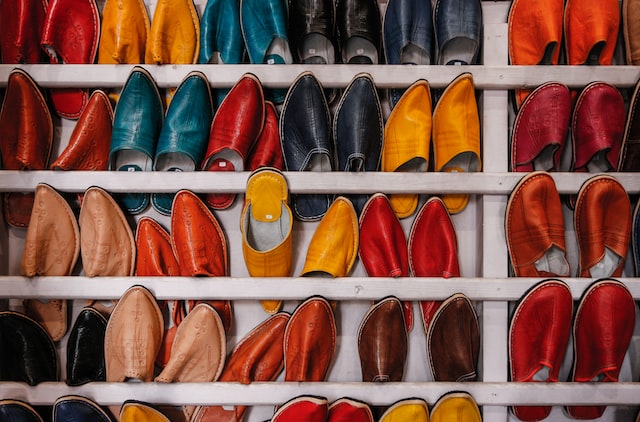
The Babouche is a traditional shoe or slipper that Moroccans usually pair with traditional clothes.
It is crafted of leather by artisans in the old Medinas of Morocco. Men’s Babouche is called “Belgha” and that of women is named “Cherbil”.
Although the two products share many similarities, the second one is embroidered with silk threads of various and comes in more vivid and contrasting color combinations.
Women’s Babouche is generally pointy but the Amazigh one that is worn by both genders has a round appearance to it.
The fez or Tarboosh:
This picture is of King Mohammed VI and his brother wearing a red Fez. The Fez is a cylinder-shaped cloth hat with a black silk tassel.
The headpiece is named after the cultural capital of Morocco known for its tanneries and giant dye pits. The city of Fez is also the source of the crimson berries dye used to give the Tarboosh its bright red color.
Frequently Asked Questions
Q: How does the Caftan differ from Djellaba?
Caftan can be seen as an elevated version of the K’mis mentioned before. It has the same K’mis attributes from the shape of silhouette, weaving of trim, embroideries and beading in the front.
Caftan takes it to the next level with costlier fabric, more intricate handwork and festive designs.
The Moroccan Caftan’s popularity extends beyond the borders of the country.
As the perfect blend of traditional and modern chic, the dress inspired world-renowned fashion and haute couture designers such as Yves Saint Laurent, Kenzo, JP Gautier, and Christian Lacroix.
Each region in Morocco has its distinct style of caftan and embroidery. Fessi style, for instance, incorporates the Fessi embroidery, which is identical on both the face and the back of the fabric.
Due to the laborious nature of its creation, the Fessi Caftan is on the higher end. Other popular options include Rbati (Rabat), Meknassi (Meknes), Chamali (Northern) and Slaoui (Sale).
Q: Where to Buy Moroccan Clothes?
Originally, traditional Moroccan clothes are hand-made. Artisans selling or offering to make such products can be found in all old Medinas, such as the one in Fes and Marrakech, and traditional working-class neighborhoods around the country.
Machine-stitched traditional clothes also gained massive popularity in Morocco due to their affordability in time and money.
Both types of sellers can be easily recognized as they showcase their goods in mannequins or window displays.
Those with a tighter budget can still shine, as traditional rental stores are there to save the day.
The latter can be found in about every neighborhood in Morocco and offer a wide collection of Caftans, Takchitas and Jabadors that can be rented for special occasions.



